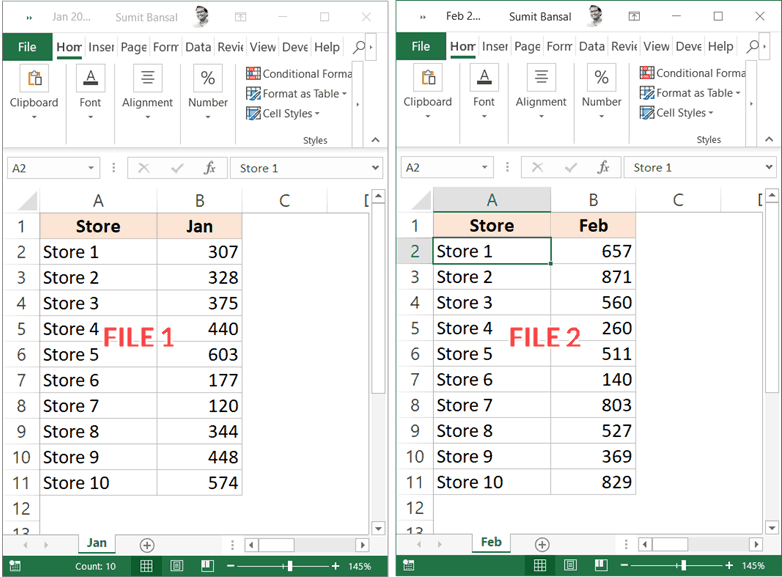5 Key Differences Between Printing Sheets and Excel

Understanding the Basics

When considering the choice between Google Sheets and Microsoft Excel, understanding the fundamental differences is crucial. These tools, though similar in many ways, cater to different needs and work environments. Let’s dive into the five key differences that might influence your decision when selecting a spreadsheet application.
1. Accessibility and Collaboration

One of the primary distinctions between Google Sheets and Excel lies in their accessibility and collaboration features:
- Google Sheets thrives in the cloud environment. You can access your sheets from any device with an internet connection, which fosters real-time collaboration. Team members can edit, comment, or review changes instantaneously without the need for sending files back and forth. Additionally, Sheets integrates seamlessly with other Google Workspace tools like Drive, Docs, and Gmail.
- Excel traditionally has been a desktop application, though Microsoft has introduced Excel for Web. While Excel Online offers some online capabilities, it doesn’t quite match the seamless collaboration experience of Google Sheets. For full functionality, you need the desktop version, which can be a limitation if you’re working on different devices or with team members who don’t have the software installed. Collaboration in Excel often involves shared drives, OneDrive, or email attachments.
💡 Note: While Excel does offer cloud-based solutions, Google Sheets still leads in terms of ease and speed of collaboration.
2. Features and Functionality

Here, we explore how the features and capabilities of both applications differ:
- Excel comes with a vast array of functions, data analysis tools, Power Query, Power Pivot, and advanced charting options. It’s designed for complex data manipulation, making it ideal for financial analysts, data scientists, or anyone who needs to perform deep statistical analysis or modeling.
- Google Sheets, on the other hand, has evolved significantly over the years. While it can’t match Excel’s breadth of advanced features, Google Sheets includes many essential functions and capabilities that are sufficient for most users. It also supports add-ons and scripts, which can extend its functionality. Importantly, Sheets updates frequently, often incorporating user feedback to improve the user experience.
| Feature | Google Sheets | Excel |
|---|---|---|
| Data Analysis Tools | Basic | Advanced (Power Query, Power Pivot) |
| Integration | With Google Workspace | With Microsoft Office Suite |
| Cloud Collaboration | Seamless | Available but less efficient |

3. Cost and Licensing

Another factor influencing your choice might be the cost structure:
- Google Sheets is part of Google Workspace, which can be free for basic features with a Google account or part of paid plans that offer more storage, administrative tools, and advanced features.
- Excel, as part of the Microsoft Office suite, requires a license or subscription (Microsoft 365). This can be a significant investment, especially for businesses or individuals needing multiple licenses or the full suite of Office applications. However, the recent introduction of free, web-based versions of Excel has somewhat lowered the barrier to entry.
4. Offline Availability

While modern workflows often rely on constant connectivity, offline functionality can still be critical:
- Excel has a robust offline mode since it is primarily a desktop application. Users can work without an internet connection and synchronize when they go online again.
- Google Sheets now supports offline mode through Google Chrome or the Sheets app, but setup is required, and not all features work offline. You need to enable offline access via settings in Google Drive or Sheets.
🌐 Note: For extensive offline work, Excel remains the preferred choice due to its inherent desktop nature.
5. Security and Compliance

The final key difference relates to security and compliance:
- Google Sheets provides robust security features including two-factor authentication, encryption in transit and at rest, and sharing permissions. However, with Google being a cloud service, some users might have concerns about data residency and ownership.
- Excel offers similar security features, especially within the Microsoft 365 ecosystem. For sensitive work, Excel’s on-premise deployment gives users full control over their data. Microsoft also offers compliance certifications like ISO, SOC, and HIPAA, which might be necessary for certain industries or organizations.
Summing Up

Choosing between Google Sheets and Excel isn’t about picking the “better” tool; it’s about selecting the one that best fits your specific needs. Google Sheets excels in collaboration and ease of access, making it ideal for teams working remotely or in a cloud-based environment. Excel, with its extensive feature set and offline capabilities, is unparalleled for complex data analysis and traditional workflows. Each has its strengths, and understanding these can help you make an informed decision based on your business requirements, budget, and work practices.
Can I use Google Sheets offline?

+
Yes, Google Sheets can be used offline by setting up offline access through Google Chrome or the Sheets app. However, not all features work offline.
Is Excel better for financial analysis?

+
Yes, Excel is generally considered better for in-depth financial analysis due to its advanced functions, data analysis tools, and extensive charting capabilities.
Can Excel and Google Sheets work together?

+
Yes, you can integrate Excel files with Google Sheets through import/export options or third-party tools to convert file formats and collaborate across the platforms.
What about data security?

+
Both Google Sheets and Excel offer robust security features. Excel’s on-premise deployment gives more control over data, while Google Sheets has strict privacy measures and compliance certifications.
Which is better for small teams?

+
Google Sheets is often preferred by small teams for its ease of collaboration, cloud-based nature, and lower or no cost structure compared to Excel’s licensing fees.



